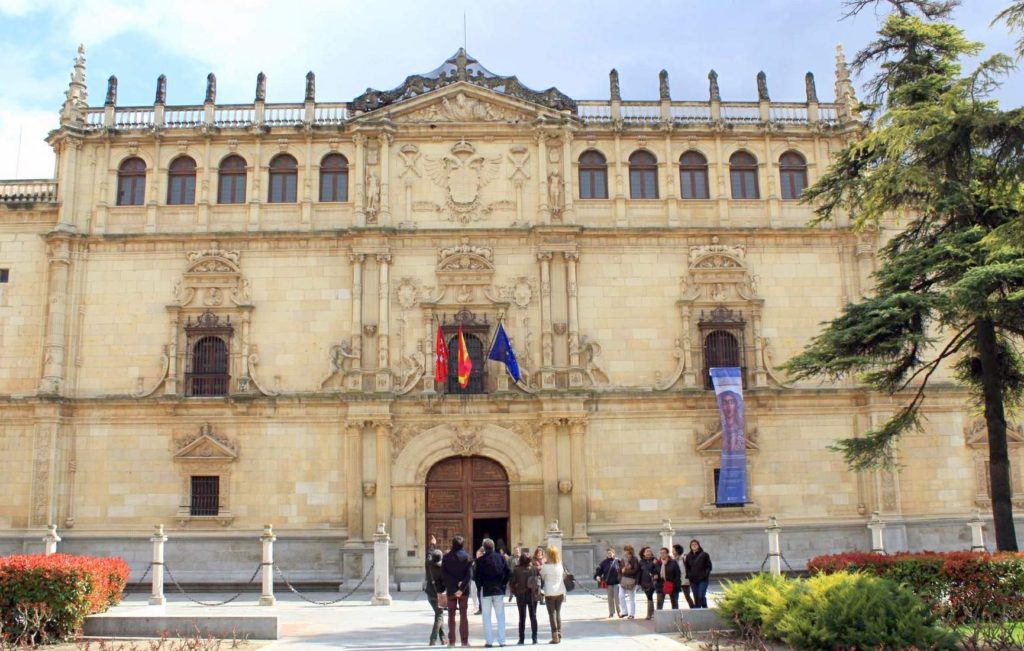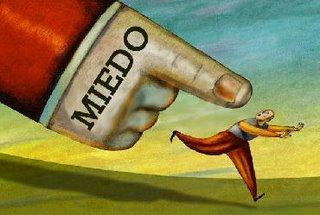Pain-Free Client Reviews
By Michael R. Cárdenas
I lied when I created this title. Client reviews just like any other type of reviews are never easy but here are some strategies that can ease the pain.
Set Expectations
What kind of quality are you looking for? Did I hear you say you always expect perfection? That’s fine. However, some clients might have different quality standards. For instance, a high visibility project, such as a marketing or advertising campaign, needs to be just right. I would also strongly suggest instructions on how to launch a parachute be correct.
Some other types of projects like creating a service manual for a washing machine may have more flexible quality requirements. I would first agree on general quality terms such as “perfect,” “good,” “unacceptable” and “acceptable.”
Now comes the tricky part: How do you match these quality definitions with the actual translations? For a large part of my career, I’ve tried to come up with a formula to define these quality standards. I could write a book on this topic and let you read it, but I’d have to charge you.
I would suggest that you define errors as either objective or subjective. For example, a subjective preferential bias towards one way of translating when there are two equally correct ways to translate is subjective. Whereas, a mistranslation is objectively an error, no matter which translators you consult with.
Errors also should be weighed depending on the nature of the mistake. For instance, at Local Concept, we look at several determining factors:
- Accuracy of translation: Does the translation convey the intended message?
- Grammar and spelling mistakes
- Local differences: Are local requirements being taken into account? (i.e. local telephone numbers)
- Consistency: Is the glossary used throughout the translation?
Once you have identified all of the types of errors, you can provide a different penalty to each one.
I would also suggest a holistic approach to client reviews. By holistic, I mean each of the stakeholders in the project – the client, the client reviewer, and the agency – need to share a goal to work toward together to create the best translation possible. This is the most challenging part of client reviews.
Let me speak to each stakeholder and provide areas where each one tends to make things challenging and ways to ease the pain.
Understand the Basics
The job of a client reviewer is an important one. Most of the time clients look to anyone in their company who speaks a second language to handle this task. If such a candidate does not exist, some clients ask anyone who has visited the country, where they speak the language, or a restaurant from that same country.
Here are some basic requirements for a good reviewer. They must have:
- excellent grammar skills;
- subject matter expertise;
- a working knowledge of translation memory, and lastly;
- time to perform their work.
Clients need to understand that translations are not an exact science. Through a collaborative effort, clients will be able to create the proper tone, terminology, and branding no matter what locale or language.
Errors will undoubtedly be made. When issues arise, everyone should take note, and have a plan in place to make sure these same errors don’t resurface. The focus for the team, when difference of opinions or errors in a translation comes up, is not to place blame, but to look to executing the best strategy going forward.
Once this has been achieved, you can better recognize which process changes need to be improved upon, based on the root cause of the problem. Clients should be somewhat patient while the review process is being finely tuned. Once this has occurred, then clients need to be less forgiving to errors.
Before making a change to a translation, make sure it’s necessary. Since this change will have to be made in the entire database, (no, you can’t just do a simple search and replace) you need to review each sentence that contains that word.
Finally, client reviewers should be tested in a timed environment. This is not common practice in our industry, but you can only make sure your reviewer is good if they pass a test. The test should include three different skills. 1) Knowledge of the subject matter; 2) A marketing piece that tests creativity even though creativity may not be required. You want out-of- the-box thinkers and a marketing or advertising piece will pick up on this skill.; 3) Lastly, they should edit someone’s work so you can see whether they perform a rewrite.
Identify Client Reviewer Stereotypes
Now it’s time to go over the most popular reviewer stereotypes out there.
The “I need to earn my pay” reviewer
This reviewer feels he/she needs to make as many changes as they can in order to substantiate their role. Even when asked to focus on the errors, they end up delivering a rewrite. They’re more concerned with having their changes all over the document, than making only what’s required. These reviewers can’t usually be coached and end up costing clients time and money.
The “It’s my way or the highway” reviewer
This reviewer doesn’t want to hear anyone’s opinion. They have an ego that barely fits through a door. When challenged, they don’t bark, they bite. In translations, often times, there is no right or wrong strategy. For instance, for an eLearning course for Hispanics working at a fast food chain, where they’re taught food handling techniques, one can argue that the formal tone should be used out of respect. The opposite, informal approach can be just as likely to be used (since it levels itself to a more collaborative working environment). Client reviewers need to be flexible and allow ideas to be bounced back, instead of pushing their own agenda.
Client reviewers need to be flexible and open-minded about language and translation. When I first started out as a translator, I would try to reason with such authoritative types. What did this approach get me? A lost client.
Now, I document our translation choices and allow for the inevitable to happen for this type of reviewer; making a mistake that causes him/her a job. Our industry requires collaboration; without it, no one wins.
The “I know it all” reviewer (but knows nothing)
These reviewers are quick to criticize and make generalizations without proper foundation. When their grammar or translation is questioned, they get offended. From an agency’s perspective, these reviewers can cost you your client.
White gloves with these reviewers are strongly recommended. My strategy is to go through each client reviewer change and prepare an explanation detailing whether you are in agreement or not. Then, I would have a call between the client reviewer and the agency linguist to go over the changes. This is an opportunity for the agency to determine your standing with the client reviewer, the knowledge of the reviewer, and his/her impression about your quality.
If your client’s reviewer is making the wrong translation choices and you feel they’re not competent, you have two choices. First, diplomatically tell the client the truth. Before you do so, find out a little bit about the reviewer (i.e. Is he employed by your client? What is his role in the company?) You must assume your comments may get back to the reviewer and he/she might decide to change translation houses.
A second option is to explain to the client that you’re willing to make all of the changes the reviewer has suggested, even though you’re not in an agreement, but will keep a document that stores this information.
Then, there are times the error is so egregious you have no choice but to escalate the matter to higher authorities. I had a client reviewer who I agreed to make her changes, although most were wrong. It was a cosmetic company and they were coming up with a cream to be applied on the buttocks of women who wanted to lose weight. Unfortunately, the client reviewer changed the application to mean “please insert the cream” …you get the point. We sent a letter to the president of the company informing him of the nature of the translation. We got a new reviewer.
The “perfect” reviewer
I left the best for last. He/she:
- has excellent command of both the source and target language;
- is a subject matter expert for the material being translated;
- makes only the necessary changes and is open to difference of opinions; and
- works with translation memory.
Heck, I’m on a roll here, how about he/she tells your client to pay you more. I would say 20% of our reviewers fit this personality. Treat them well, send them Christmas cards, chocolates, and vote for them to be President.
All client edits need to be reviewed by the agency, to make sure nothing has been lost in translation. A question often asked is if clients need to perform a full review or just a spot check. My philosophy is: start reviewing everything and once the quality is good, perform random reviews.
Continue with What Works (and Leave Behind What Doesn’t)
When choosing a linguist, agencies should look for the same attributes as we mentioned when discussing the client reviewer. I would add one more requirement here; they must leave their ego/emotions at the door. We all understand how seriously linguists take language and culture. We need to not take it personally when we receive client feedback.
You might have noticed me alluding to the fact that often times we need to work with a difficult reviewer, clients, or agencies. Here are some helpful tips on how to deal with difficult colleagues.
First, choose your battles wisely. Stand your ground when the term or the translation will have some serious consequences when it goes out on the market. Remember the Spanish translation for “Got Milk?” It ended up asking consumers if they were lactating.
Second, state your position with the necessary backup. Google is a pool of information, but it is not always reliable. Dictionaries are helpful, but not always spot on. Use subject matter experts who ultimately should be the decision makers on the subject being translated. Also, stay positive during your communications. Try to resolve differences gracefully. Oh boy, I sound like a counselor.
A caveat I would like to share with you is to not make any assumptions. During editing, I find many translators prefer to translate without asking for clarification. This can only lead to errors. At a translation conference in Seville, where I presented on the topic of creating quality translations, I put what looks like a traveling bag on the top of the table where I was presenting. After speaking for 90 minutes, I asked the translators in the audience what was in the bag. They answered a computer, papers, clothing, and traveling items. I opened the bag, and took out my dog, “Toro,” who had been quietly sleeping.
Case in point: don’t make assumptions. With a closer look at the bag, they would have noticed there was a mesh net for an animal to breathe and would have identified it as a pet carrying bag.
I leave you with two last thoughts. Increase your tolerance to frustrations, which are inevitable and part of the review process. Secondly, translators who know their translations are being reviewed by the client will perform better than if no review is done.





















 En su historia, hasta el momento, solamente cuatro mujeres han recibido el galardón (la última en hacerlo fue Elena Poniatowska en 2013).
En su historia, hasta el momento, solamente cuatro mujeres han recibido el galardón (la última en hacerlo fue Elena Poniatowska en 2013).
 El Paraninfo de la Universidad de Alcalá de Henares (originalmente Universidad Complutense en referencia al nombre romano de la ciudad, Complutum) es la sala más emblemática del Colegio Mayor de San Ildefonso. Fue edificado por Pedro de la Cotera y su construcción se inició en 1516. El Paraninfo tiene una larga historia como lugar de acogida para la celebración de actos ilustres, tal y como señala el sitio web de la actual Universidad de Alcalá en
El Paraninfo de la Universidad de Alcalá de Henares (originalmente Universidad Complutense en referencia al nombre romano de la ciudad, Complutum) es la sala más emblemática del Colegio Mayor de San Ildefonso. Fue edificado por Pedro de la Cotera y su construcción se inició en 1516. El Paraninfo tiene una larga historia como lugar de acogida para la celebración de actos ilustres, tal y como señala el sitio web de la actual Universidad de Alcalá en 




 En un ámbito empresarial, el miedo al fracaso paraliza a la sociedad española en infinidad de ocasiones, ya que se asocia a la pérdida de oportunidades y se ve desde un punto de vista trágico. Incluso me atrevería a decir que esta acepción del término fracaso se puede hacer extensible a muchos países europeos. Sin embargo, en otras culturas, como la estadounidense, el fracaso se asocia a la apertura de nuevas oportunidades y se considera un motivo para generar cambios e innovar.
En un ámbito empresarial, el miedo al fracaso paraliza a la sociedad española en infinidad de ocasiones, ya que se asocia a la pérdida de oportunidades y se ve desde un punto de vista trágico. Incluso me atrevería a decir que esta acepción del término fracaso se puede hacer extensible a muchos países europeos. Sin embargo, en otras culturas, como la estadounidense, el fracaso se asocia a la apertura de nuevas oportunidades y se considera un motivo para generar cambios e innovar.



 En los Estados Unidos, que recibieron mucha inmigración irlandesa en el pasado, es también una celebración muy popular. El desfile que se organiza en Nueva York con motivo de este día es actualmente el más grande del mundo.
En los Estados Unidos, que recibieron mucha inmigración irlandesa en el pasado, es también una celebración muy popular. El desfile que se organiza en Nueva York con motivo de este día es actualmente el más grande del mundo.

Recent Comments